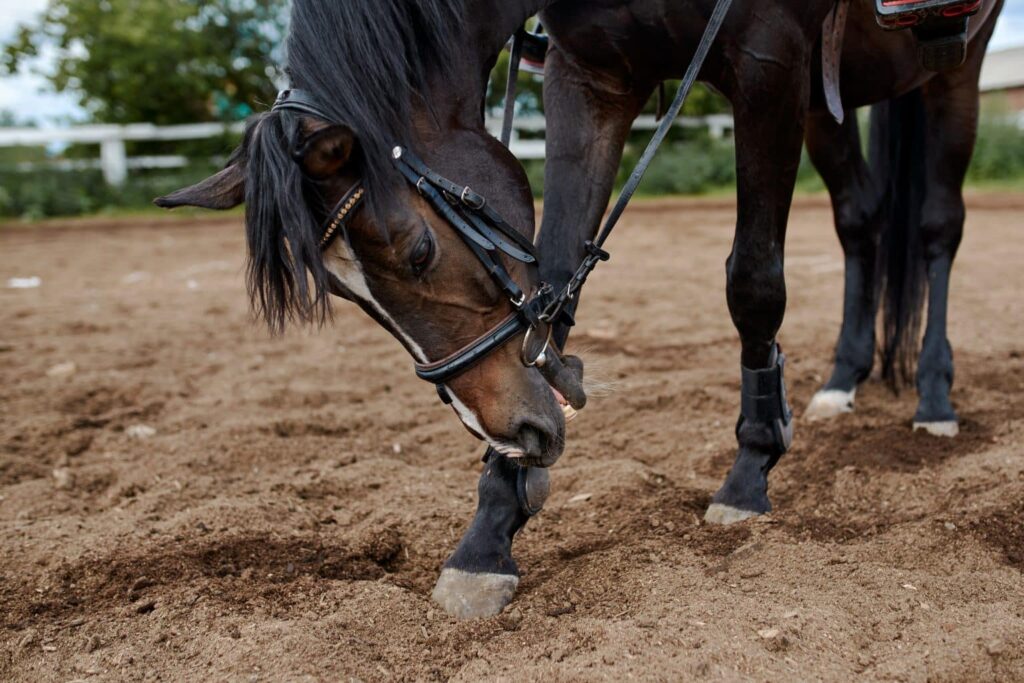Introduction
Horses are majestic animals renowned for their grace, power, and strength. Their legs are essential to their performance and general well-being, whether they are being utilized for racing, sports, work, or leisure riding. Unfortunately, horses frequently have leg injuries that can cause severe discomfort, poor performance, and even life-threatening circumstances. In this article, we’ll examine the many leg injuries horses may sustain as well as methods for prevention and appropriate treatment.
Types of Leg Injuries
The legs of horses are intricate systems made up of bones, tendons, ligaments, muscles, and joints that are prone to many kinds of damage. Typical leg wounds include:
- Tendon and Ligament Injuries: Overexertion or trauma can strain or tear tendons and ligaments. When the tendon fibres stretch or rupture, damage to the tendon such as bent tendons result. Lameness and pain can result from ligament injuries, such as suspensory ligament injuries.
- Joint ailments: Overuse or unexpected stress frequently leads to joint ailments. Pain, inflammation, and decreased movement can be brought on by diseases including synovitis and rheumatoid arthritis.
- Fractures: High-impact traumas, such as falls or collisions, can result in fractures in the horse’s leg bones. These wounds need rapid veterinary care since they are serious.
- Hoof Injuries: Because of the importance of a horse’s hooves for mobility, ailments including abscesses, bruising, and cracks can cause lameness.
- Cuts and Wounds: If cuts, wounds, and punctures are not treated very often, the horse may develop an infection and other issues.
Prevention Strategies
While there are hazards that cannot be eliminated, there are several precautions that horse owners, trainers, and caretakers may take to lessen the risk of leg injuries:
- Proper Conditioning: To prevent overexertion and pressure on the legs, gradually increase a horse’s level of fitness. A carefully planned exercise program helps fortify muscles and ligaments, reducing their susceptibility to injury.
- Proper Footing: Ensure that the surfaces used to exercise and ride horses are appropriate. A hard or uneven surface that might strain the legs, joints, and hooves should be avoided.
- Warm-Up and Cool-Down: Always warm up and cool-down a horse before exercising. Controlled movements and gentle stretches can help warm up the muscles and lower the chance of injury.
- Proper Hoof Care: A qualified farrier should regularly trim and shoe the hooves to preserve balance and alignment and to ward off any problems that can result in leg injuries.
- Nutritionally Balanced: Giving horses a diet full of vitamins, minerals, and proteins helps them build strong bones and muscles, which lowers their chance of injury.
- Schedule routine veterinarian examinations to find any potential problems as soon as possible. This makes it possible for prompt treatment and action.
- Safe Turnout: Give horses access to secure, roomy turnout spaces where they can wander about without danger of collisions or falls.
- Appropriate Tack and Equipment: Uncomfortable saddles or other equipment can change a horse’s stride and put pressure on its legs. Verify that the gear fits snugly and is appropriate for the horse’s activity.
Caring for Leg Injuries
Accidents might occur despite all precautions being taken. To stop additional harm and to assure the horse’s comfort and healing after a leg injury, prompt measures must be taken:
- Dial a vet’s number: Get in touch with a vet as soon as you can. They will determine the extent of the damage and offer advice on what to do next.
- Immobilization: To prevent further stress, immobilize the wounded limb if the veterinarian advises it. The use of bandages, splints, or casts may be necessary for this.
- Pain management: To assist the horse in coping with discomfort, administer any recommended painkillers by the veterinarian’s instructions.
- Rest and Rehabilitation: The horse may need to rest and undergo rehabilitation, depending on the extent of the injury. This can involve carefully supervised exercise, physiotherapy, or other recovery-promoting therapies.
- Wound Care: To avoid infection, make sure to properly clean and treat any wounds. For the greatest potential recovery, take care of wounds according to the veterinarian’s directions.
Conclusion
Horses’ general quality of life can be negatively impacted by leg injuries, which can be crippling. Preventative approaches can dramatically lower the likelihood of these injuries, such as proper conditioning, diet, and routine veterinarian treatment. Accidents can still happen, though, and quick intervention is required to give the victim the greatest chance of recovery. Horse owners and caretakers may preserve the health and lifespan of their equine companions by being aware of the many sorts of leg injuries that horses are susceptible to, putting prevention measures into practice, and being knowledgeable about how to treat an injured horse.

